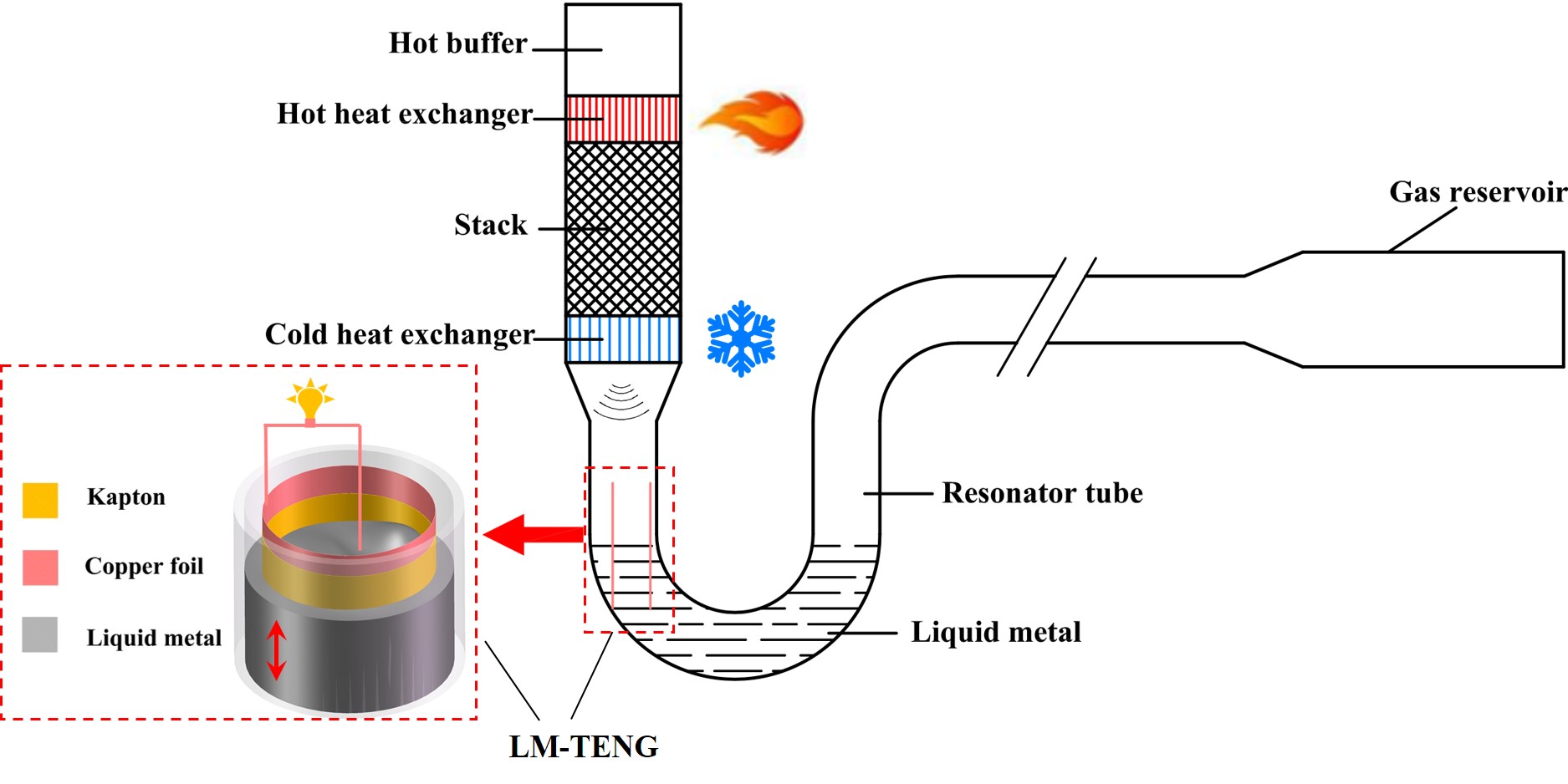Chinese scientists have proposed a high-reliable thermal power generator by combining thermoacoustic effect and triboelectric effect.
The latest research, published online in Applied Physics Letters and selected as featured article, was directed by Prof. LUO Ercang and Prof. YU Guoyao from Technical Institute of Physics and Chemistry (TIPC) of the Chinese Academy of Sciences.
The environmental and energy crises have been increased since the past decades. Developing thermal energy collectors to scavenge abundant low-quality thermal energy (such as waste heat, geothermal heat and combustion of biomass) and convert it into mechanical or electric energy is a promising energy strategy to diminish crises.
However, currently the majority of thermal power generation technologies (such as Rankine cycle, internal combustion engine, and Stirling engine) involve solid moving parts, which undermine the reliability of these technologies and make frequent maintenance highly required.
In this work, Chinese scientists invested a novel thermal power generator which could convert thermal energy into electric energy. No solid moving part consists is one of the attractive features of this novel generator. The generator could be highly reliable and readily to achieve a long life span. Besides, this generator promises a theoretically high heat-to-electric conversion efficiency.
This novel thermal power generator called thermoacoustically-driven liquid-metal-based triboelectric nanogenerator (TA-LM-TENG), which includes two parts: thermoacoustic engine (TAHE) and liquid-metal-based triboelectric nanogenerator (LM-TENG).
The TAHE first converts thermal energy into acoustic energy via oscillatory thermal expansion and contraction of the working gas. The LM-TENG then converts the acoustic energy into electrical energy via the coupling effect of contact electrification and electrostatic induction.
As shown in the schematic, when heating the hot heat exchanger of the TAHE, the working gas in the engine will start spontaneous oscillation. The oscillatory motion of working gas pushes the liquid metal column resonantly flowing upward and downward in the U-shaped tube. Liquid metal immersed and separated with the Kapton material periodically. The generator therefore generates an alternate electric potential difference at the electrodes. Electrical power is extracted from the TA-LM-TENG.
In the preliminary experiments, the scientists obtained a highest open-circuit voltage amplitude of 15V on a conceptual prototype.
This work was supported by the National Key Research and Development Program of China and the National Natural Science Foundation of China.

Figure 1. Schematic of the TA-LM-TENG (Image by LUO et al.)
https://aip.scitation.org/doi/10.1063/5.0041415
NEWS